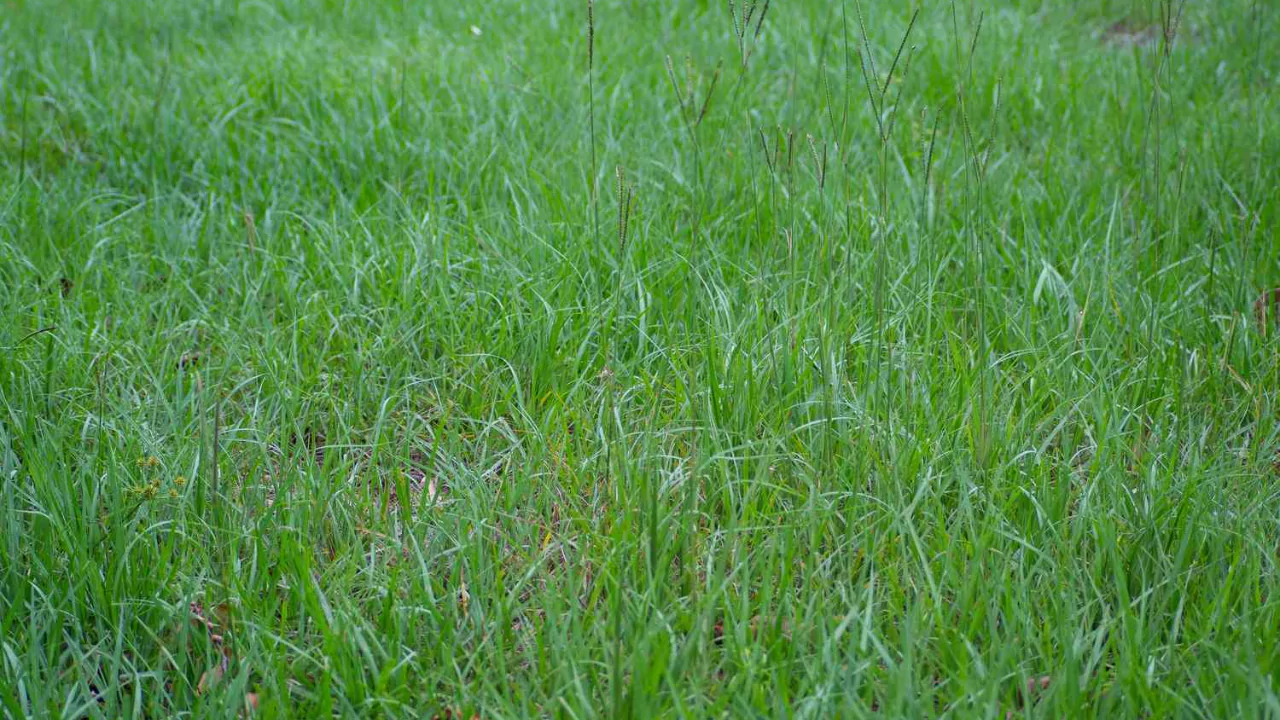
Bahiagrass is a popular choice for pastures and road margins across the southeastern United States. As a lawn grass it does not deliver the deep, uniform green of some other varieties, but it thrives in poor sandy soils and warm, drought-prone areas.
Its almost woody rhizomes can spread nearly nine feet, and its abundant seed heads often escape into adjacent plots, making it weedy in places. When established along highways or in fields, the same vigorous growth drifts into neighbouring home lawns and sports fields.
Yet that extensive root system gives bahiagrass outstanding drought resistance. It requires little fertiliser, has few pest or disease worries, and builds only a light layer of thatch.
On the downside, it struggles under heavy foot traffic, salty conditions, and cold winters. For homeowners, planting is easy: seed, sod, or small plugs all work.
Bahiagrass Varieties
Most turf professionals advise against common bahiagrass for residential lawns.
Instead, Argentine bahiagrass forms a denser, darker sod that resists insects and minor disease, shows better cold tolerance, and therefore earns a spot on some home sites.
Pensacola bahiagrass is the most popular variety and the principal pasture grass across the southeastern United States.
It displays strong drought resistance and handles mild cold spells better than Argentine bahiagrass. Although its abundant seed heads may annoy home-lawn owners, the Pensacola strain survives cooler weather that sometimes browns Argentine.
Bahiagrass Watering
Water is most urgent when leaves fold, wilt, take on a blue-gray hue, or when steps remain visible in the grass. Because bahiagrass is highly drought-resistant, it can bounce back from prolonged dry spells. On the flip side, overwatering invites stubborn weeds.
Mowing Bahiagrass
During peak growth, keep bahiagrass at 3 to 4 inches by mowing every 7 to 14 days, trimming no more than one-third of the blade height each time. Lower cutting weakens heat and drought tolerance, opens doors to weeds, and stunts root development.
The grass blade itself is coarse, and the upright seed stalks are equally stiff, so a heavy-duty rotary mower is essential; that powerful machine, in turn, demands frequent sharpening. Even then, many homeowners complain that their bahiagrass still looks a bit shaggy after mowing.
Fertilizing Bahiagrass
An annual soil test remains the most accurate guide to a Bahia lawns fertilizer needs. Overall, Bahiagrass tolerates low fertility, an attribute that allows it to thrive even in less productive soils.
Apply nitrogen at no more than one pound per thousand square feet per treatment. Within a few weeks, chlorotic pale blades shift to a deeper green, confirming that the turf is responding.